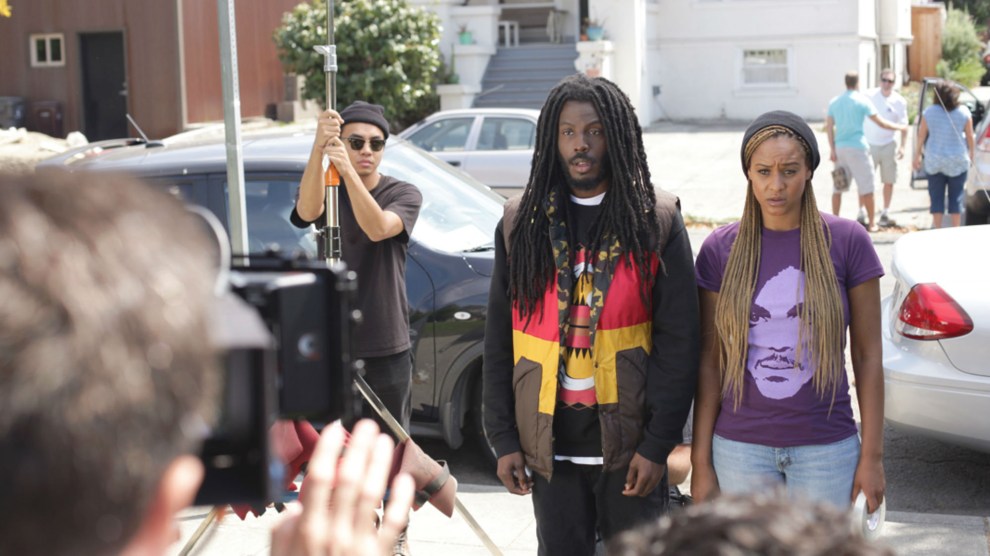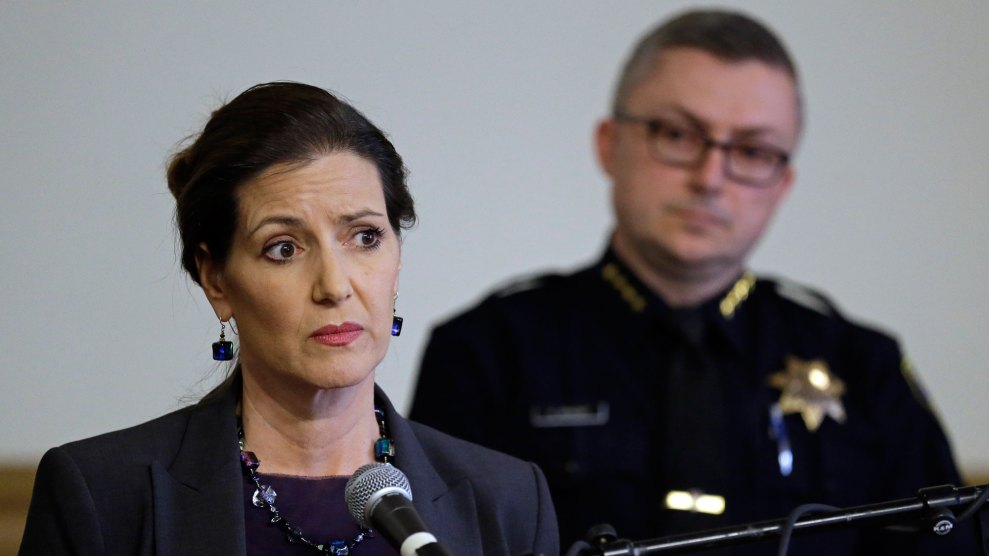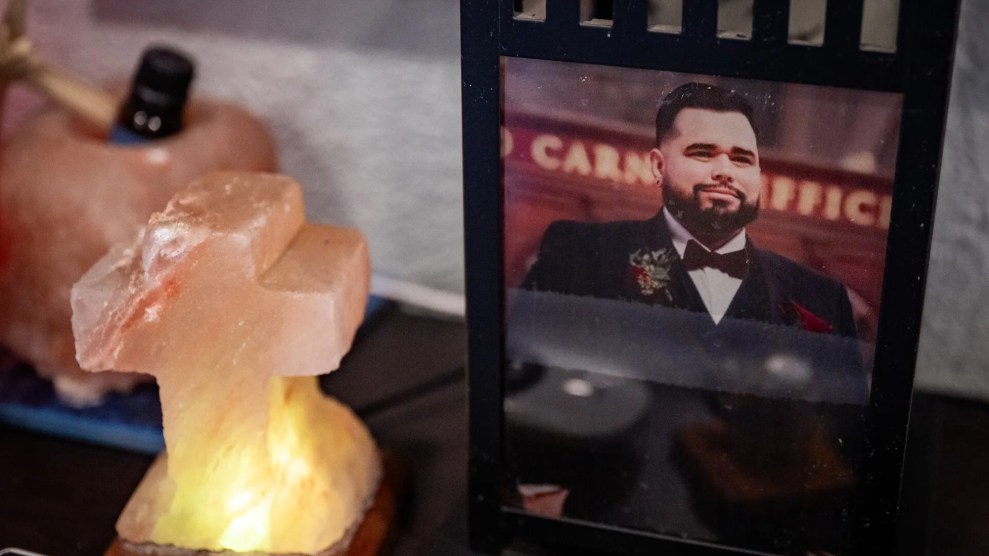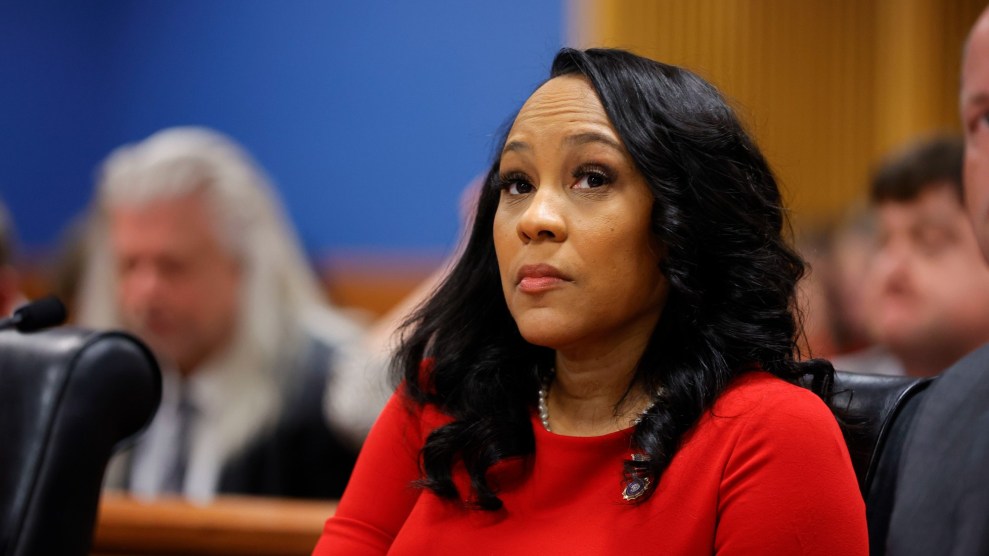Don’t look to The Force for a scathing critique of the Oakland Police Department. You won’t find it here. But Oakland director Peter Nicks, starting in the fall of 2014, spent two years embedded with the OPD. The result, a vérité-style documentary that opened Friday in Bay Area theaters, is a rare deep dive into the mindset of a department trying to reform its ways amid a national movement for accountability in policing.
The Force, which already won a Best Director award in the documentary category at this year’s Sundance Film Festival, is Part 2 in Nicks’ Oakland trilogy. The first installment, The Waiting Room, a 2012 film about the city’s Highland Hospital, was shortlisted for a Best Documentary Oscar. The third film, about Oakland’s public schools, is still in the early stages.
The Force, by design, is told largely from the perspective of law enforcement, in contrast to documentaries such as Ava DuVernay’s 13th and Whose Streets?, a film about the 2014 Ferguson protests in Missouri. “I don’t fashion myself an activist filmmaker,” Nicks says. “We wanted to take people into [the department] and let them understand what’s going on.”
Just after filming began, however, a grand jury declined to charge former Ferguson police officer Darren Wilson in the fatal shooting of Michael Brown. That decision helped put Black Lives Matter on the map and forced a shift in the film’s point of view. I spoke with Nicks about his time with the cops, his role as a filmmaker, and why he feels the vérité approach is the best method for unearthing the truth.
Mother Jones: Where does The Force fit into your trilogy?
Peter Nicks: A core theme that threads through the films is how our public institutions impact communities that have lived under generational inequities, be it through a visit to the emergency room, or being treated unjustly by a police officer because of implicit bias, or being suspended from school for being unruly. We wanted to unearth that deep history in a three-dimensional way, especially in these environments where there’s a lot of divisiveness between cops and communities. Who are these cops? Who becomes a cop and why? How are they serving or not serving the community? And to try to unpack that.
MJ: The film is shot vérité-style. We experience Oakland cops on the job, rookie cops in training, ridealongs with the chief, but there are no sit-down interviews with police or community members or civil rights attorneys or victims of police violence. Why did you choose to do it this way?
PN: We try to take a step back and allow truths and complexities to reveal themselves organically. That asks a little bit of the audience, but it’s a framework that I think humanizes people. It doesn’t always mean making someone look good. It means revealing them in three dimensions. One of the value propositions of my nonprofit, Open’hood, is getting access to these institutions in the first place. It’s hard to get inside an ER or a police department or a classroom. People don’t really understand what it’s like to be a doctor in a big city hospital, or a cop on the street, or a teacher charged with a classroom full of kids who are coming in with all kinds of problems. So we want to take people into those environments in a visceral way.
MJ: How did you convince the OPD to give you so much access?
PN: The Waiting Room was shortlisted for an Academy Award. I was a guest of honor at the State of the City address and the mayor introduced me and others as Oakland creatives the community should support. There was awareness of the approach I took with The Waiting Room—a very nonjudgmental style. So I said, “This is a moment when we need to understand who you are and what you’re doing, one in which police officers get flattened into a two-dimension narrative on people’s Facebook feeds.” At the time I pitched it, they were seen as a model for reform. Officer-involved shootings were way down. They were the first department to give body cameras to all officers. So they wanted to tell that story. We began the process of talking to them before Black Lives Matter was a national hashtag. When that happened, everything changed.
MJ: Talk about that.
PN: Initially it was easier, because of the framework of the trilogy, to tell the story from the perspective of the cops. But Ferguson/BLM moved us to shift focus and to understand that that’s an undeniable part of the context. In the summer of 2015, there was a string of officer-involved shootings. That was the first shift— toward the point of view of protesters. We had to figure out how to incorporate those perspectives and that anger while still keeping the film from the point of view of the police. The film became a dual-track story: how cops respond to community safety—and the call for accountability on the other. It’s a huge responsibility being embedded in a police department where you live. I would go to protests and see friends of mine there. I don’t fashion myself an activist filmmaker, but I have a deep understanding of the narratives [the BLM] movement carries. So, what’s my responsibility? We wrestled with that.
MJ: How would you characterize your role?
PN: As a storyteller. Storytelling leads to empathy, and we desperately need empathy in our culture right now. The value proposition of my work is taking people inside these vital institutions. People come with very strong opinions about police to where they may not be satisfied. But my films are part of a spectrum: You have 13th. You have Whose Streets? You have Copwatch. These are all part of the conversation we need to be having.
MJ: One drawback to the observational style is that the context of the reforms was lacking. We don’t know why the OPD is under federal oversight in the first place—or that these reforms were forced on them.
PN: To me, the observational style lends itself to deeper authenticity. It may not answer every question that you have, but the key points are incontrovertible.
MJ: What would you say to folks who argue you can’t do a movie about policing without talking to the people affected by it?
PN: You see them in our film. You hear those voices and they’re telling you directly, “This is why we don’t trust the police when they say a shooting was justified, “or “That part of the video footage is missing.” And we include video of the implicit bias training where guest speakers talk about the history behind why certain communities don’t trust the police. But an artist has to decide on an approach; they can’t satisfy everybody.
MJ: In one of the most interesting scenes, some rookie cops are debating a video in which an officer fires 13 shots at a knife-wielding suspect. One rookie argues that officers are trained to use whatever force is necessary to neutralize a threat. Another says 13 shots weren’t necessary, and presses the other cop to concede. The second cop says, essentially, that he didn’t a difference between shooting someone once and shooting them 13 times.
PN: We watched that scene over 200 times while editing. The most meaningful thing that comes out of it is this young black woman officer is trying to find her voice in the midst of a male-dominated conversation. I saw her getting exasperated and I felt that that was a significant moment. Her argument against the 13 shots was that she thought the officer in the video gave an order to drop the knife. But he said drop the gun. So there was a disconnect in perception there that speaks to the chaotic nature of of these events. The thing that bothers people about that scene is—you can debate about whether it was necessary to use force at all, but then, do you really need to shoot 13 times? The officer who said yes, two of his brothers were killed by gang violence. He became a cop because he wanted to make a difference. That cop is generally perceived one way by viewers, but they might see him differently if they knew that backstory.
MJ: A big OPD prostitution scandal happened just as you were wrapping up your shooting. How did that change things?
PN: We had to re-cut the film. But first we grappled with whether we were going to put it in the film at all. The thrust to that point was looking at reform from the perspective of dealing with implicit bias, and relating that to the reality that cops face every day. The sex scandal was different. The common thread was abuse of power. But the sex scandal was also about a kind of institutional failure on a moral issue that was different from the race issue. We thought it deserved its own film. In the end, we decided on the framing: “We followed the police department for two years after Ferguson and this is what we saw.” And the cinema-vérité style helps that.
MJ: The film still doesn’t really grapple with the fact that you have this police chief, Sean Whent, who is presented as a reformer—and yet he led a cover-up of the sex scandal that resulted in his ouster. So is this guy committed to police accountability or isn’t he?
PN: It appears Whent was so close to satisfying the terms of the consent decree that when the scandal broke, he wanted to sidestep it so that coming out from under federal oversight wouldn’t be jeopardized. Is it a Shakespearean tragedy? Was this a true reformer who got caught up and went the wrong way? Or was this a guy who was unfit from the beginning? That’s something people are going to have to decide for themselves.
MJ: Jeff Sessions is working to roll back federal oversight of local law enforcement. What do you think about that after spending so much time with the OPD?
PN: The sex scandal wouldn’t have come to light without federal oversight. So we need to ask ourselves: “Is that a wise choice on a national level, when we clearly have issues at the institutional level with corruption, morality, implicit bias—all of these things and, further, the responsibility of citizens in helping to formulate a new model for community safety. Some of these are dangerous cities. And so one thing this film is looking to do is show people that cops have a difficult job. The conversation about police accountability needs to sit alongside the underlying problems that we are having in our communities. It’s asking you to hold two truths simultaneously.

















